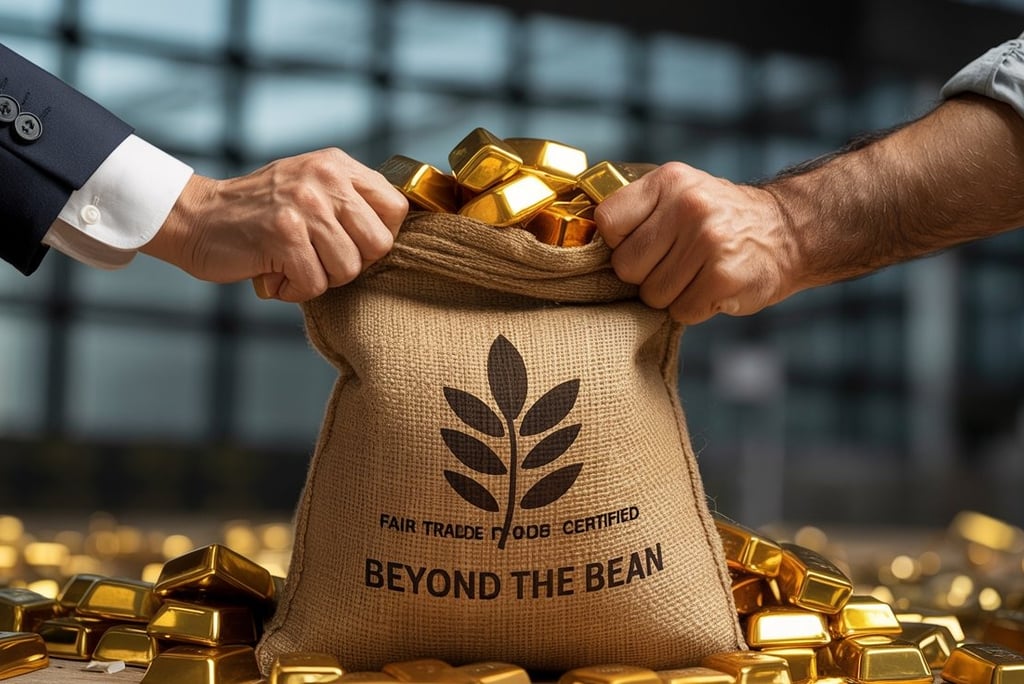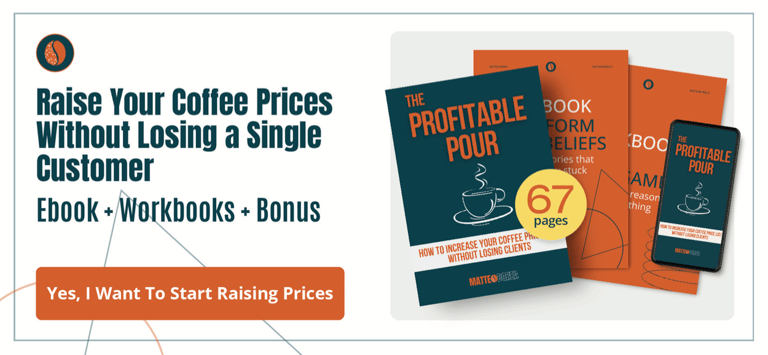💎 DOWNLOAD FREE COFFEE CRISIS SURVIVAL KIT
Coffee: The Next “Cattle Market”?
Why the worst may still be ahead
COFFEE MARKET
Matteo Borea
8/22/20254 min read
Many believe the storm in coffee futures has passed. That the crazy prices of the past months were just an anomaly, and that from here we’ll go back to calmer waters.
I don’t think so.
I follow financial markets and the moves of speculative funds every day. Not because I love charts, but because anyone who lives on coffee like we do must understand how the “Goliath” of finance moves if they don’t want to be crushed by it. And in the past few weeks, I’ve seen worrying signals.
I’m not talking about the past, I’m talking about the future. That’s why I feel it’s my duty to share my vision. I do it for my colleagues, the “Davids” who roast, sell, and keep real businesses alive every single day.
And those who have been reading my newsletter for a while know this: months ago I wrote that we hadn’t yet seen the peak of volatility. Many told me I was being alarmist. Then arabica hit record highs.
The problem isn’t the peak. It’s what comes after.
Yes, arabica in New York touched $4.30/lb last February, an all-time high.
Yes, robusta in London reached $5,840/ton, another record.
But the problem isn’t the peak itself. It’s the market structure we’re dealing with now.
The futures curve is inverted: near contracts cost more than the distant ones. This is called backwardation, and it means one simple thing, there’s a shortage of coffee right now. ICE-certified stocks dropped to 743,000 bags, the lowest level in 14 months [source: “ICE Coffee Inventories Drop to 14.5-Month Low” – Barchart – https://www.barchart.com/story/news/34431366/ice-coffee-inventories-drop-to-145-month-low].
Meanwhile Brazil, which alone supplies half of the world’s arabica, had already harvested 94% of the new 2025/26 crop, but had sold only 31% by July 9th, below the historical average. And in July, Brazilian exports collapsed by 27.6% year-on-year [sources: Cecafé/Reuters – https://www.reuters.com/article/brazil-coffee-harvest-2025-idUSKCN1PC0JQ and https://www.reuters.com/article/brazil-coffee-exports-idUSL1N3AQ1HB].
So, the coffee is there but it’s not leaving. Big producers are holding back, waiting for even higher prices. Meanwhile, the physical market dries up.
Those who read my blog know I wrote this well before it became obvious: it was never just a “peak problem.” It’s structural.
Speculation smells blood
Now add funds to this already tense scenario. The same funds that, as Lavazza’s chairman told Bloomberg, are responsible “for 80% of the price surge.”
And here’s the paradox: funds aren’t fully in yet. COT (Commitments of Traders) data as of August 12 shows money managers have increased their net longs, but we’re not at extreme levels yet. Translated: if they decide to push, coffee could follow the same path as U.S. cattle futures, the “cattle market” that delivered stratospheric returns for speculators. Now you understand why I chose this title.
I’ve been repeating this for months: when funds run, they don’t lose. Real businesses do.
Real consequences for roasters
Here’s what’s happening on the ground:
Cash flow under siege. With prices tripled and interest rates high, roasters are short on liquidity. Bloomberg reports margin calls worth billions of dollars have burned through traders’ cash reserves.
Exports reshuffled. The U.S. slapped a 50% tariff on Brazilian coffee from August. Result? American roasters must now look for alternative origins at much higher prices.
Europe under pressure. At the end of 2025, the EU Deforestation Regulation (EUDR) kicks in. Many importers are already front-loading purchases to avoid being locked out of the market.
Those who have followed me for a while know I called these moves early on: when I said futures could become a nightmare, it wasn’t to scare, it was to prepare.
This is no time for hope. It’s time for action.
Here comes the uncomfortable part: those who think (and hope) “let’s just wait, prices will go down” are fooling themselves. There’s no guarantee prices will drop anytime soon. On the contrary: fundamentals and speculation point the other way.
The truth is that coffee risks becoming the next “cattle market”: a prolonged, self-fueling rally that separates survivors from those who shut down.
I’m not saying it’s certain. I’m saying if it happens, it will be devastating. And those who don’t prepare today may soon hear an annoying: “I told you so.”
My vision for the “Davids against Goliaths” of coffee
So what now? I’m not telling you to speculate or turn into traders. I’m saying: protect yourselves intelligently, revisit your blends without betraying your positioning, set flexible price lists, and most of all, communicate. Talk to your clients. Don’t be afraid to explain why prices are rising and what your values are.
Those who read my blog know these aren’t “academic” strategies. They’re the same moves that have saved companies in their darkest times.
The future won’t be easy, but those who act now can come out stronger. And maybe, a year from now, look back and say: “I survived because I had the courage to see what others refused to see.”


Self-generated image with AI - ideogram.ai
© Matteo Borea - All rights reserved - Z0145324S


